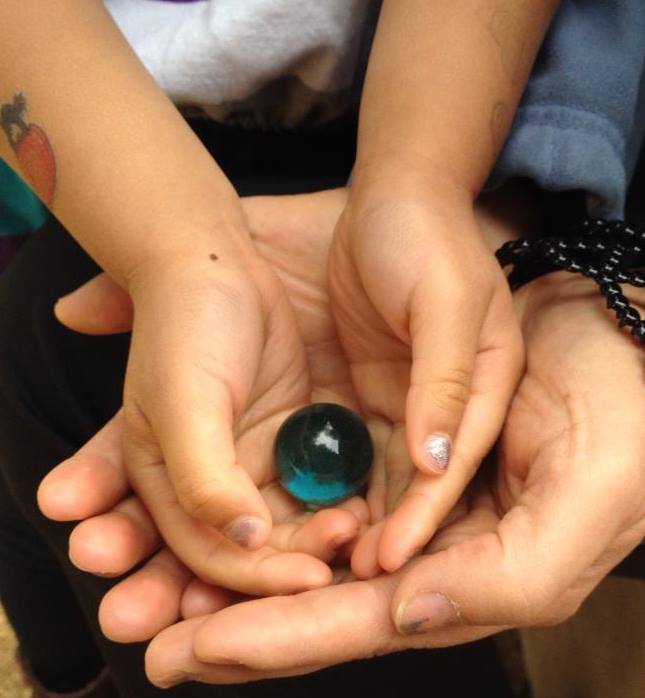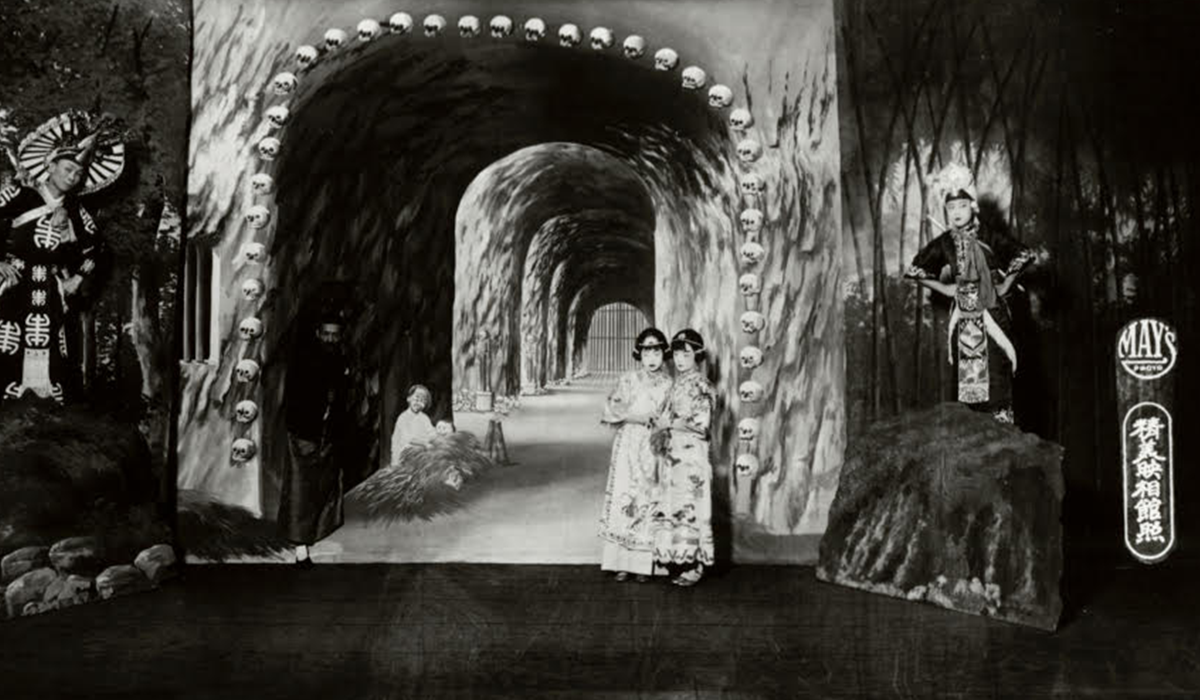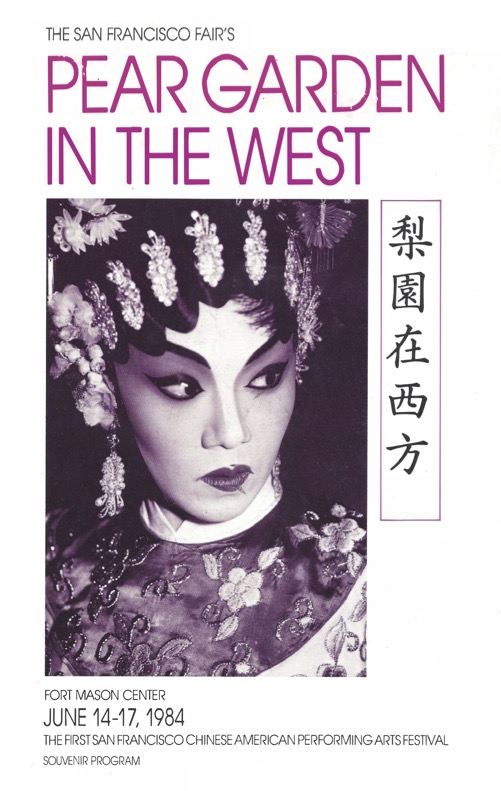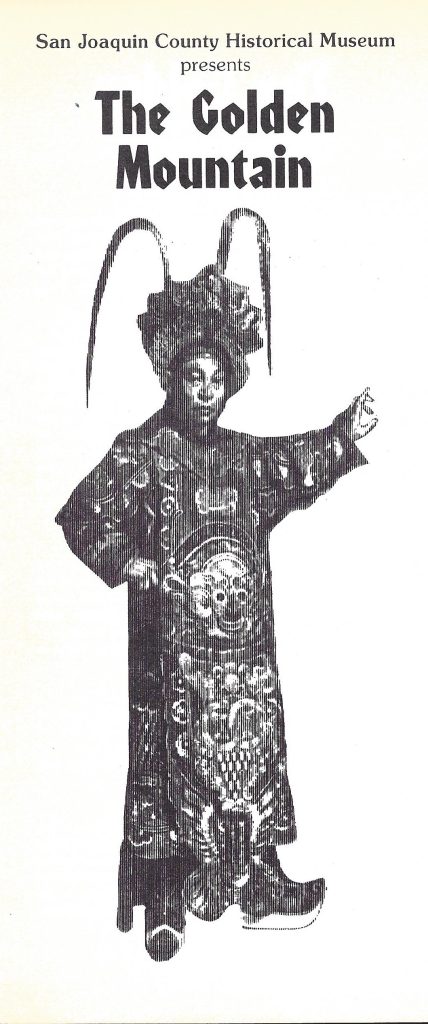This film has been made freely available to viewers via the Internet Archive, thanks to the generous support of Ephemera Pictures, Lydia Tanji and Wylie Wong, producers.
We hope Vanishing Chinatown will spark more questions about other Chinese American photographers, Cantonese opera, and the legacy of family histories.
Click “fullscreen” arrows (at bottom right of frame above) for a better viewing experience.
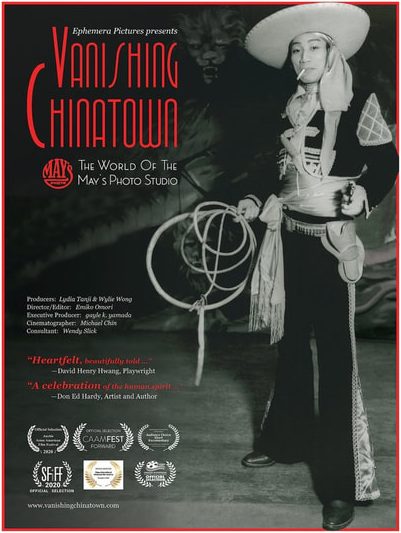
Vanishing Chinatown: The World of The May’s Photo Studio – captured dreams and life in San Francisco Chinatown creating family portraits in spite of family separations due to the Chinese Exclusion Act. Granddaughter Corinne Chan Takayama shares memories, as the photographs reveal a rich culture of family, community, and Cantonese opera of the old, “vanishing” Chinatown.
a 2020 documentary by Ephemera Pictures.
Running time 28 minutes.
These stunning images document San Francisco Chinatown in the early to mid-1900s, a vanishing “old Chinatown” vibrant with culture, chronicling the lives of an immigrant community becoming Americanized, photographed by a member of that community presenting immigrants as they wanted to be remembered.
The photographs were almost lost, but art student Wylie Wong rescued 700 photographs trashed in a dumpster. Corinne Chan Takayama, granddaughter of the photographers Leo and Isabella May Chan Lee didn’t know what had happened to the photographs, but forty years later found that Wylie had saved some of the photographs. We interweave Corinne and Wylie as Corinne tells personal stories sparked by the photographs and Wylie, along with other historians and Cantonese opera performers, explain the historical background and artistic value of the images. The importance of family, preserving memories and dreams of earlier generations, identity, and a creative resistance to racist laws and societal constraints are the main themes in Vanishing Chinatown.
Website: https://www.vanishingchinatown.com/
Director/Editor: Emiko Omori
Producers: Lydia Tanji and Wylie Wong
Executive Producer: gayle k. yamada
Cinematographer: Michael Chin
Sound: Sara Chin
Consulting Editor: Wendy Slick
©2020 Ephemera Pictures, LLC All Rights Reserved
The May’s Studio Photographs
May’s Studio was operated by Isabelle May Chan and Leo Chan in San Francisco’s Chinatown from 1923 to 1976. Leo Chan emigrated from China sometime after 1911. Isabelle was born in San Francisco. The Studio, which opened in Waverly Place, focused on producing publicity photographs for actors and actresses who performed in Chinatown theaters. Many of their
photographs were of productions staged at the Great China Theater, which opened in 1925, and was later renamed the Great Star Theater. The Studio was also known for producing wedding portraits as well as photographing other aspects of life in Chinatown, including portraits of businesses, street life, parades, and other events. In 1931 the Studio moved to 770 Sacramento Street for the remainder of its operation.
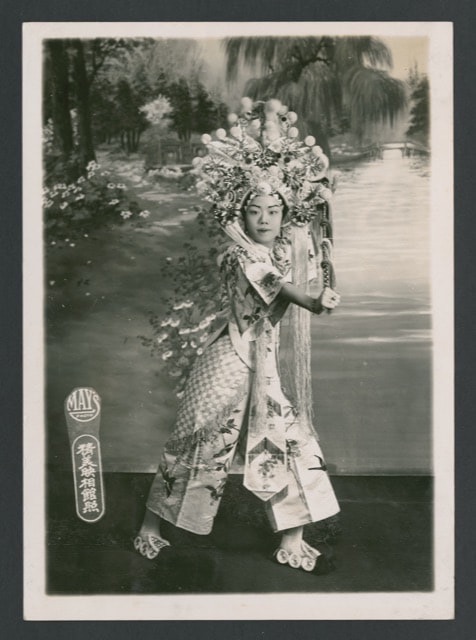
View the Wylie Wong collection of May’s Studio photographs and San Francisco Chinatown ephemera, 1920-1999, in the Stanford Digital Repository. The collection was given by Wylie Wong to Stanford University, Special Collections in December 2013. Wylie Wong is an Asian art and antiquities dealer based in San Francisco.
San Francisco’s Chinatown
The oldest Chinatown in North America, San Francisco is one locale in a tapestry of America’s Chinatowns, a collection of over 60 stories from 14 Asian American organizations across North America, created in partnership with Google Arts & Culture and the National Trust for Historic Preservation.
1920s Chinatown Insider is an online exhibition, a four-part story which explores scenes from a critical decade of rebuilding San Francisco’s Chinatown, through the lens of the May’s Photo Studio.
Editors: Waverly Chao-Scott, Mark Dean Johnson, Stephen Gong, David Lei. Consultants: Arthur Dong, Jianye He, Felicia Lowe, Shirley Ng, Nancy Rao, Lydia Tanji, Wylie Wong. Developed by Center for Asian American Media (CAAM) in partnership with the Chinatown Media & Arts Collaborative.
- PART 1: 1920s Chinatown Insider – Exploring people and places from a decade of rebuilding San Francisco’s Chinatown through the lens of the May’s Photo Studio.
- PART 2: Interior Spaces – Exploring a time capsule of interiors from a decade of rebuilding San Francisco’s Chinatown through the lens of the May’s Photo Studio.
- PART 3: Investing in the Community – Exploring community scenes and stories from a critical decade of San Francisco’s Chinatown through the lens of the May’s Photo Studio.
- PART 4: A Tale of Two Opera Houses – Exploring scenes and stories from the Cantonese Opera and a critical decade of San Francisco’s Chinatown through the lens of the May’s Photo Studio.
Cantonese Opera
Cantonese opera is one of the major categories in Chinese opera, originating in southern China’s Guangdong Province. It is popular in Guangdong, Guangxi, Hong Kong, Macau and among Chinese communities in Southeast Asia. Like all versions of Chinese opera, it is a traditional Chinese art form, involving music, singing, martial arts, acrobatics, and acting.
READ: Printed souvenir program for San Francisco Fair’s “PEAR GARDEN IN THE WEST,” the first San Francisco Chinese American Performing Arts Festival. at Fort Mason Center, held from June 14-17, 1984.
THE PEAR GARDEN IN THE WEST: America’s Chinese Theater, 1852-1984 – Exhibition at the San Francisco Fair, Fort Mason Center History Exhibit Hall, included a presentation of the Pear Garden in the West Project, Co-directors Jack Chen and Wylie Wong, sponsored by Intersection for the Arts, San Francisco.
READ: The Golden Mountain – San Joaquin County Historical Museum (1981), an exhibit brochure presenting a brief history of the Chinese experience in California and San Joaquin County and to explore the clothing traditions of these immigrants who came in search of the “golden mountain.”
In October of 1852 the first Chinese theatrical company to perform in San Francisco made its debut. During the years that followed, numerous Cantonese theatrical troupes came to California, performing in San Francsico, and then moving on down to the Delta regions, wherever concentrations of Chinese could be found.
Chinese Theatre
Inside Chinese Theater (in Nineteenth Century California and Beyond) by Nancy Yunhwa Rao, University of Illinois Press, 2025.
Chinatown Opera Theater in North America by Nancy Yunhwa Rao, University of Illinois Press, 2017.
The Rise of Cantonese Opera by Wing Chung Ng, University of Illinois Press, 2015
Flying Dragons, Flowing Streams: Music in the Life of San Francisco’s Chinese by Ronald Riddle, Greenwood Press, 1983
170 Years of Chinese Opera in America, a virtual (online) presentation by Dr. Nancy Yunhwa Rao, Chinese American Museum DC, 2021.
Early Chinese Photographers
Chinatown Through a Wide Lens: The Hidden Photographs of Yucho Chow by Catherine Clement, Chinese Canadian Historical Society of British Columbia, 2019.
Project website: https://www.yuchochow.ca/
At Home/On Stage: Asian American Representation in Photography and Film – Cantor Art Center, August 31, 2022–January 15, 2023.
Angel Island Insight #2: Lai Yong, Angel Island Insight: Educational Program Resources, Del Sol Quartet & ArtsEd4All, 2021.
San Francisco Chinatown History
A History of The Chinese in California : A Syllabus – editors: Thomas W. Chinn, H. Mark Lai, Philip P. Choy, CHSA, 1969
The Public Face of Chinatown: Actresses, Actors, Playwrights, and Audiences of Chinatown Theaters in San Francisco during the 1920’s by Nancy Rao, Journal of the Society of Music, 2011, Vo. 5, No. 2, pp235-270
Picturing Chinatown: Art and Orientalism in San Francisco by Anthony W. Lee, University of California Press, 2001
